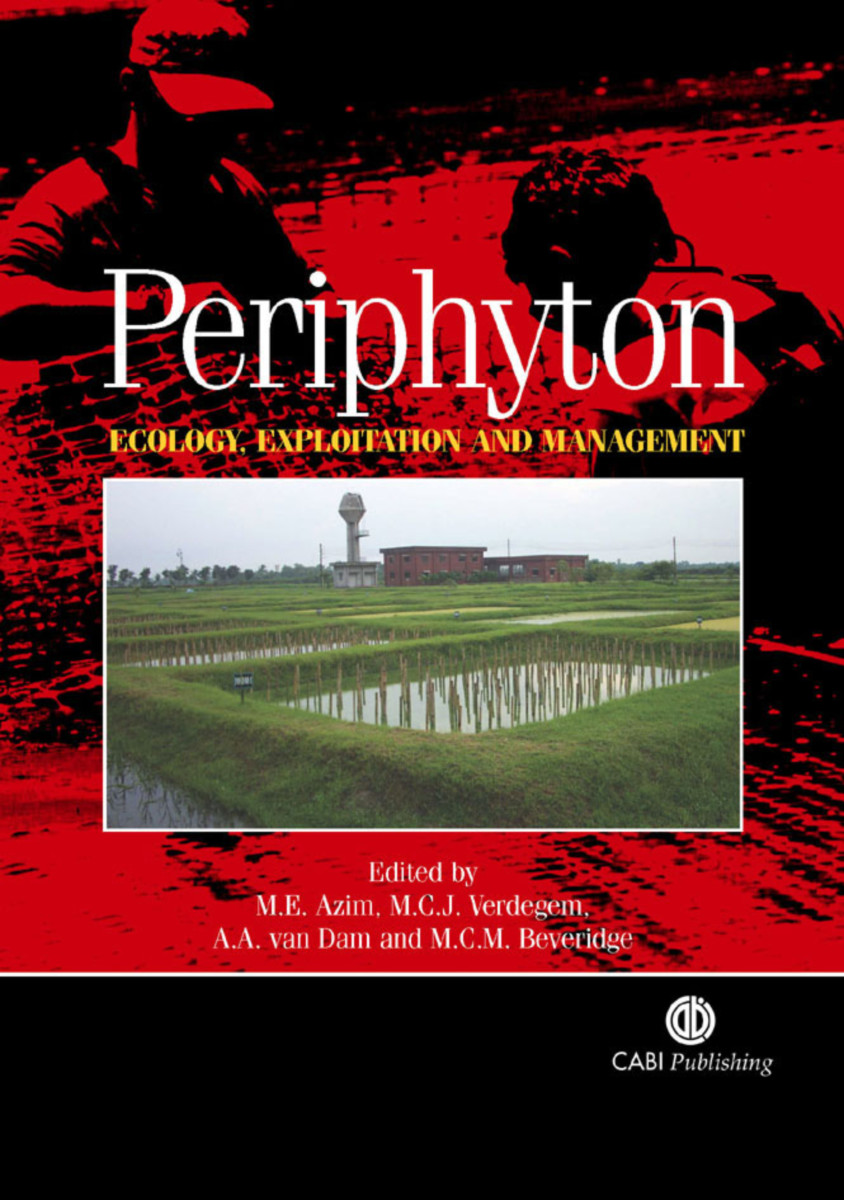Periphyton
Ecology, Exploitation and Management
- Publisher
CABI - Published
18th November 2005 - ISBN 9780851990965
- Language English
- Pages 352 pp.
- Size 6.875" x 9.75"
The first comprehensive monograph on periphyton, this book contains contributions by scientists from around the globe. Multi-disciplinary in nature, it covers both basic and applied aspects of periphyton,and is applicable worldwide in natural, extensive and intensive managed systems.
Periphyton, as described in this book, refers to the entire complex of attached aquatic biota on submerged substrates, including associated non-attached organisms and detritus. Thus the periphyton community comprises bacteria, fungi, protozoa, algae, zooplankton and other invertebrates. Periphyton is important for various reasons: as a major contributor to carbon fixation and nutrient cycling in aquatic ecosystems; as an important source of food in aquatic systems; as an indicator of environmental change. It can also be managed to improve water quality in lakes and reservoirs; it can greatly increase aquaculture production; it can be used in waste water treatment.
The book provides an international review of periphyton ecology, exploitation and management. The ecology part focuses on periphyton structure and function in natural systems. The exploitation part covers its nutritive qualities and utilization by organisms, particularly in aquaculture. The final part considers the use of periphyton for increasing aquatic production and its effects on water quality and animal health in culture systems. This book will help scientists and entrepreneurs further understand the ecology and production of aquatic systems and venture into new and promising areas.
* Periphyton and Aquatic Production: An Introduction, M E Azim, Saitama University, Japan, M C M Beveridge, FRS Freshwater Laboratory, Scotland, UK, A A van Dam, UNESCO-IHE Institute for Water Education, The Netherlands and M C J Verdegem, Wageningen University, The Netherlands
ECOLOGY
* Periphyton Structure, Diversity and Colonization, M E Azim and T Asaeda, Saitama University, Japan
* Periphyton Dynamics and Influencing Factors, J E Vermaat, Vrije Universiteit Amsterdam, The Netherlands
* Periphyton in the Aquatic Ecosystem and Food Webs, R G Wetzel, University of North Carolina, USA
* Periphyton in Freshwater Lakes and Wetlands, L G Goldsborough, University of Manitoba, Canada, R L McDougal, Ducks Unlimited Canada, Canada and A K North, Red River Basin Commission, Canada
EXPLOITATION
* Utilization of Periphyton for Fish Production in Ponds: a Systems Ecology Perspective, A A van Dam and M C J Verdegem
* Adaptations to Feeding in Herbivorous Fish (Cyprinidae and Cichlidae), F A Sibbing, Wageningen University, The Netherlands and F Witte, Leiden University, The Netherlands
* Traditional Brush Park Fisheries in Natural Waters, R L Welcomme, Imperial College of Science, Technology and Engineering, London, UK
* Periphyton (Biofilms) as Biological Indicators in Managed Aquatic Ecosystems, S Sabater, University of Girona, Spain and W Admiraal, University of Amsterdam, The Netherlands
MANAGEMENT
* Effect of Periphyton on Water Quality, A Milstein, Agriculture Research Organization (ARO), Israel
* Similarities between Microbial and Periphytic Biofilms in Aquaculture Systems, M C J Verdegem, E H Eding, V Sereti, R N Munubi, R A Santacruz- Reyes, Wageningen University, The Netherlands, and A A van Dam
* Periphyton-based Pond Polyculture, M E Azim and M A Wahab, Bangladesh Agricultural University, Bangladesh
* Research on Periphyton-based Aquaculture in India, P Keshavanath and B Gangadhar, University of Agricultural Sciences, Bangalore, India
* Periphyton-based Cage Aquaculture, S M H Huchette, University of Melbourne, Australia and M C M Beveridge
* Utility of Added Substrates in Shrimp Culture, J H Tidwell, Kentucky State University, USA and D Bratvold, University of Georgia, USA
* Importance of Periphyton in Abalone Culture, T Kawamura, University of Tokyo, Japan, R D Roberts, Cawthron Institute, New Zealand and H Takami, Tohoku National Fisheries Research Institute, Japan
* Periphyton-based Aquaculture in Asia: Livelihoods and Sustainability, S W Bunting, M Karim, University of Stirling, Scotland, UK and M A Wahab
* Periphyton Ecology, Exploitation and Management: Knowledge Gaps and Directions for Future Research, M C J Verdegem, A A van Dam, M E Azim and M C M Beveridge
M E Azim
No information
Marc C J Verdegem
No information
Anne A van Dam
No information
Malcolm C M Beveridge
No information


